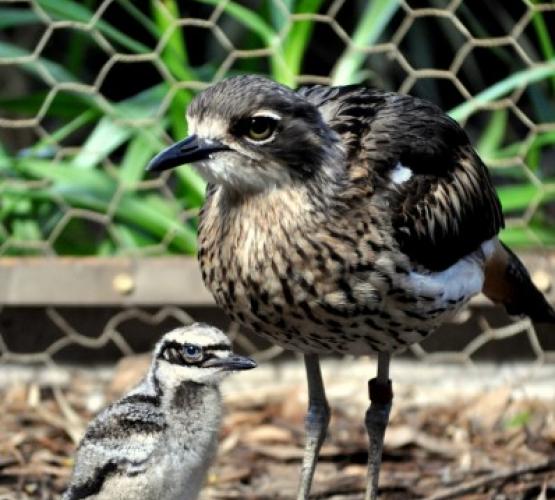- +61 8 9248 1984
-
WHITEMAN
12.9℃

Burhinus grallarius
Least Concern
Bush Thick-knee’s can live an average of 10 years.
650 grams
They are omnivorous; their diet includes insects, arthropods, seeds, small reptiles and mammals.
They will utilise man made habitats including golf courses and orchards and are found in open woodland, savannah, dune scrub and the fringes of mangroves and forests.
The Bush Thick-knee is also known as the Stone Curlew, which refers to the family’s resemblance to the nomadic wader curlews, which actually aren’t closely related to the group. Thick-knees are closely related to plovers and lapwings. The Bush Thick-knee is widespread throughout Australia (more common in the north) and Tasmania, and also found in southern New Guinea. They will utilise man made habitats including golf courses and orchards and are found in open woodland, savannah, dune scrub and the fringes of mangroves and forests. They are very vocal especially at night when they are most active. Their call is a distinct eerie “whistling scream”. The Aboriginal name for them is Willaroo as it sounds as though they are saying this. The pattern and colouration of the bird help them camouflage into their surroundings during the day. When disturbed they will lay outstretched on the ground and only run for heavy cover if the disturbance comes too close. They are mainly ground-dwelling. Their predators are mostly birds of prey, foxes and dingoes. An average clutch of 2 eggs are laid in spring and incubated by both parents in a small scape in the ground. The eggs take 28-30 days to hatch and are cared for by both parents for up to a year. It takes the young up to 8 weeks to fledge.